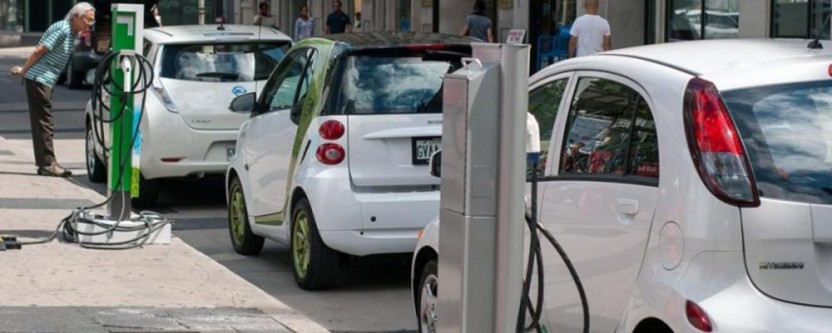Under new government proposals electric cars could be given their own special lane at traffic lights and be exempt from one-way systems.
The proposals are part of an effort to encourage drivers to opt for electric cars.
According to a recent consultation document, Clean Air Zones are areas “where action is focused to improve air quality and the cleanest vehicles are encouraged.”
The government is working closely with the cities of Birmingham, Leeds, Nottingham, Derby and Southampton on the introduction of Clean Air Zones. These five cities were chosen because they have particularly high levels of nitrogen dioxide.

Electric vehicles do not directly emit no pollution and local authorities view them as an important means of bringing nitrogen dioxide levels down.
In the government’s draft clean air zone framework, published on Thursday, the government outlined incentives local authorities could use to encourage people to switch to electric cars, including:
- providing preferential parking bays or access for ULEVs.
- lower parking fees for ULEVs.
- preferential delivery bays or access for ULEVs.
- preferential taxi rank use for ULEVs.
- dedicated taxi only city centre and strategic charging hubs.
- allowing access to bus lanes, exemptions from other restrictions such as oneway systems, and priority at traffic lights for ULEVs.
Environment Minister Thérèse Coffey said: “We need to tackle air pollution and creating Clean Air Zones will improve the quality of life for people who live and work in our towns and cities, both now and in the future.
“Real progress has been made, but there is more to do, which is why we have also committed more than £2 billion to greener transport schemes since 2011.”
AA spokesperson calls the proposals a “recipe for disaster”
Ian Crowder, spokesman for the Automobile Association, was quoted by MailOnline as saying: “How you’re going to fit electric car lanes in a city like London when we struggled to get cycle lanes in. It’s like trying to encourage electric cars on the cheap.
“I think it’s a recipe for disaster to try and do that. Because the bulk of vehicles on city roads are internal combustion engine cars it’s going to encourage congestion with more vehicles standing still and more pollution.”
